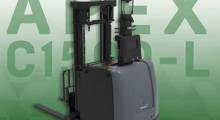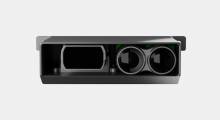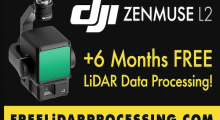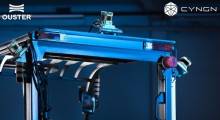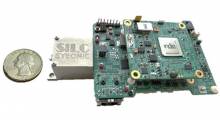Innoviz Technologies today announced that it and the BMW Group are starting the first development phase in their development of a new generation of lidar sensors. Under their expanded agreement, Innoviz will develop B-Samples based on its second-generation InnovizTwo sensor.
“Lidar is one of the critical technologies underpinning Level 3 or even higher automated functions,” stated Nicolai Martin, senior vice president for driving experience at BMW Group, in a release. “Optimizing lidar technologies and costs are the major challenges in order to bring Level 3 highly automated driving into the mainstream”
“We are very pleased to have Innoviz develop the first B-Samples of this new lidar generation and hope that the results of the B-Sample phase create a basis for a possible future extension of our collaboration,” he said.
Innoviz, BMW continue collaboration
For the past few years, Innoviz and BMW have been working together, and the BMW 7 Series will include lidar-enabled automated technology later this year. The companies said they are now collaborating to develop the lidar-based Minimal Risk Maneuver (MRM) system.
“The MRM acts as a secondary safety driving decision platform that will leverage the advanced performance, reliability, and resiliency of the InnovizTwo lidar to manage real-time driving decisions,” said Innoviz.
“We're in a different phase in 2023 than in 2018, when we could just show BMW and other automakers a prototype,” said Assaf Shabat, a product manager at Innoviz. “Now we need to demonstrate a high degree of maturity on the path to meeting safety requirements.”
“We're testing many aspects, such as field of view and resolution,” he told Robotics 24/7. “Our main business is automotive OEMs.”
“Once we have the volume, we can bring the price down and give confidence to others that we can manufacture this product at scale,” noted Shabat. “Unlike other lidar providers, we commit to our customers that we'll bring products to the most mature level they need and continue to build lidars with the most reliability.”
The Tel Aviv, Israel-based company added that half of its investment in research and development is spent on software and claimed that it has made rapid advances in artificial intelligence and machine learning to accelerate upgrade cycles and expand capabilities.
InnovizOne to enable LOXO last-mile deliveries
In late June, Innoviz said that Bern, Switzerland-based LOXO plans to deploy the InnovizOne lidar in its alpha electric, autonomous delivery vehicles through 2024. The companies tested Innoviz's lidar earlier this year.
“There is ample opportunity to optimize the exchange of goods from local distribution centers to a customer's doorstep to elevate the logistics experience for today's consumers,” stated Amin Amini, co-founder and CEO of LOXO.
“Innoviz's automotive-grade lidar is a key component in facilitating optimized and autonomous last-mile delivery,” he added. “We're excited to equip our growing fleet of vehicles with Innoviz's lidar and continue on our mission to expand access to goods in Switzerland and beyond.”
“LOXO is the first company doing fully autonomous delivery using our lidar,” said Shabat. “We've got a real vehicle with three units—one in front and two on the sides for full coverage. Delivery environments include intersections, traffic lights, and pedestrians, making them much more complicated than highways.”
Lidar finds multiple uses
InnovizOne is a high-performance, solid-state lidar and could be used for robotaxi, shuttle, and delivery applications, claimed Innoviz. It is designed to be reliable, affordable, and power-efficient and to integrate with Level 3 to 5 autonomous vehicles, ensuring safety, the company said.
What about the debate between cameras and lidar? Are both necessary?
“Visual sensors are very popular, but if you want 3D visibility, cameras can struggle,” Shabat replied. “Even with stereo vision, they're still not able to achieve the accuracy of lidar of a few centimeters at 100 meters. For different lighting and weather conditions, you want to have redundant systems and sensor fusion for maximum safety.”
Innoviz said vehicles equipped with InnovizOne will help meet the growing demand of the autonomous last-mile delivery market, which Research and Markets projected to reach $5.9 billion by 2030.
Shabat noted that while more robotaxis are emerging in the U.S. market, robotic delivery services face fewer regulatory hurdles because they don't carry passengers and move at lower speeds.
“One more application we're seeing more and more is V2X [vehicle to everything] or I2V, for 'infrastructure to vehicle,'” he added. “Lidar can be installed on infrastructure to monitor and map an area and communicate via onboard units with different vehicles and robots. It could track vehicles in a port or help provide navigational data for detecting obstacles or other vehicles.”
About the Author
Follow Robotics 24/7 on Linkedin
Article topics
Email Sign Up




